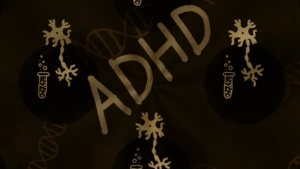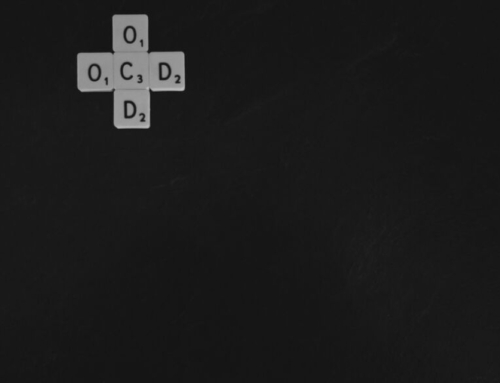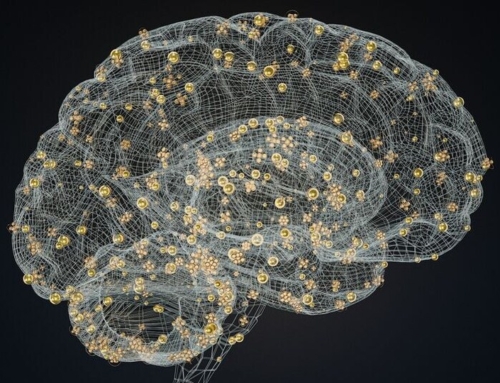If we are going to explore some of the most common misunderstandings about adult ADHD, we should first decipher what adult ADHD is.
In summary, Attention Deficit Hyperactivity Disorder (ADHD) is a developmental neurocognitive disorder that is first present in childhood. Thus, adults who have ADHD also had it in childhood. Whether it was diagnosed in childhood or later as an adult, one of the diagnostic criteria for ADHD is that symptoms began in childhood and were present in two or more environments.

Further, the inattentive or hyperactive symptoms (or a combination of the two) must have had a significant impact on functioning. Often with adults, this shows up in their work and/or home environment. Examples include, the inability to focus on tasks, difficulty completing projects, being physically restless in situations where sitting still and attending is the social expectation, losing and forgetting items or tasks, etc.
As with all mental health disorders though, someone may exhibit tendencies or characteristics of a disorder, but it will typically not be diagnosed as a disorder if a significant impact on functioning isn’t present or if someone doesn’t meet all the diagnostic criteria. So, if we know all of this about ADHD, why are there still so many misunderstandings about adults who have ADHD?
There seem to be certain diagnoses that are talked about a lot or even popularized due to something that happened on the news, in a movie, or on social media. Society at large tends to overuse these diagnoses for anyone who may possess a few attributes that are vaguely related to a disorder.
For example, anyone who likes things particularly clean is dubbed as “OCD,” even though OCD has nothing to do with merely the desire to keep things clean. This seems to be true for ADHD as well. Anyone who has a lot of energy or trouble focusing is often assigned the socially unofficial diagnosis of ADHD.
This is often used in casual conversation by people who don’t have any training in the assessment and diagnosis of mental disorders. This inevitably can create a lot of misinformation, hurt, and confusion for those who are genuinely struggling with ADHD or seeking more understanding about it.
As a special education teacher-turned-therapist, I have had a lot of experience working with both youth and adults who fall into either of the aforementioned categories. I want to take some time to lovingly educate and unpack some of the most common misunderstandings about adult ADHD in hopes of bringing more clarity, understanding, and guidance to those who are personally affected, or know someone affected by ADHD.
Misunderstanding No. 1: ADHD can begin in adulthood.
As we vaguely touched on in the definition of ADHD, one of the most common misunderstandings to unravel related to ADHD is that it can begin in adulthood. This is different from receiving a diagnosis for the first time in adulthood. In the DSM-5-TR (APA, 2022), ADHD is classified as a neurodevelopmental disorder, developmental being the keyword here. One of the diagnostic criteria for ADHD is as follows, “several inattentive or hyperactive-impulsive symptoms were present prior to age 12 years” (APA, 2022, p.69).
Misunderstanding No. 2: Diagnostic criteria of ADHD.
ADHD can tend to be misunderstood and overgeneralized because we are not considering the full diagnostic criteria for the disorder. This is certainly true for diagnostic criterion C, which we briefly touched upon in the introduction of this article.

It says, “Several inattentive or hyperactive-impulsive symptoms are present in two or more settings (e.g., at home, school, or work; with friends or relatives; in other activities)” (APA, 2022, p. 69). Why does it matter that we understand this? One of the reasons is that we are trying to see that there is a pattern of these symptoms occurring rather than a problem in the environment itself.
Another reason this is important is that we want to make sure we are treating the correct disorder. Many other mental health disorders can have overlapping symptoms with ADHD. Some of these include post-traumatic stress disorder, generalized anxiety disorder, and even substance use disorders. Thus, it is important not to assign symptoms to the wrong diagnosis, so that you can have a treatment plan appropriate to your struggles, history, trauma, etc.
If you are an adult wondering if you have ADHD that was undiagnosed when you were young, it could be helpful to think back to your childhood experiences at school, home, and other environments. It could also be beneficial to speak with people who knew you then to help you determine if these symptoms were present at the time, or if these symptoms developed later for perhaps a different reason (i.e., experiencing a traumatic event).
Misunderstanding No. 3: Children grow out of ADHD by the time they are adults.
For a long time, the consensus was that children grew out of their ADHD as they enter adulthood. However, long-term studies of children diagnosed with ADHD show that 40-60% of them still met the diagnostic criteria for ADHD as adults (Volkow Swanson, 2013). This belief was likely held, in part, because ADHD can manifest itself differently across one’s lifespan.
For example, ADHD often manifests as hyperactivity in very young kids (3-4 years). Whereas in high school, it can often look like, “fidgetiness or an inner feeling of jitteriness, restlessness, or impatience” (APA, 2022, p. 71). Further, the APA notes that, in adults, “along with inattention and restlessness, impulsivity may remain problematic even when hyperactivity is diminished” (2022, p. 71).
Misunderstanding No. 4: ADHD = hyperactivity.
 The previous section overlaps with another common misconception about ADHD: that it always manifests itself with hyperactivity. This is completely false. This misconception has likely led to overlooking an ADHD diagnosis for many children, particularly females. An ADHD diagnosis in adults requires five or more symptoms to be met in either the “inattentive” or “hyperactive / impulsivity” categories.
The previous section overlaps with another common misconception about ADHD: that it always manifests itself with hyperactivity. This is completely false. This misconception has likely led to overlooking an ADHD diagnosis for many children, particularly females. An ADHD diagnosis in adults requires five or more symptoms to be met in either the “inattentive” or “hyperactive / impulsivity” categories.
Further, one study found that adults who are diagnosed with ADHD more often present with inattentiveness rather than hyperactivity (Prakash et. al, 2021). When clinicians assign an ADHD diagnosis to a patient, they specify whether it is predominantly inattentive, predominantly hyperactive, or a combination of the two. Just as a generalized anxiety disorder diagnosis can vary in the way it manifests itself in people, so will the symptoms of someone with an ADHD diagnosis.
Misunderstanding No. 5: An ADHD diagnosis is necessary to get help.
Maybe you are wondering why someone would seek a formal ADHD diagnosis in the first place. An ADHD diagnosis can be helpful to acquire accommodations for work or school. It is also necessary to access proper and appropriate medication if needed. However, if you aren’t sure whether your symptoms are due to ADHD, you can still seek help. Perhaps you thought you had adult ADHD and it was anxiety.
The way we would approach treatment and intervention for those two diagnoses is quite different. Some of the symptoms of post-traumatic stress disorder (PTSD) can mimic those of ADHD. Some of these overlapping symptoms include restlessness, irritability, inattention, and poor concentration (APA, 2022).
You can probably imagine that a trauma-based disorder would also require a much different treatment plan than a neurodevelopmental disorder. Now imagine if a child had PTSD that was never diagnosed and never treated. This is not something they will simply grow out of as an adult. Now the adult is struggling with focusing and accomplishing projects at their place of work and they are incorrectly diagnosed with ADHD rather than PTSD.
 The PTSD would sadly continue to go untreated and these symptoms, and others, would continue to persist no matter how many ADHD-related strategies the counselor teaches them. The Diagnostic and Statistical Manual of Mental Disorders reminds us that parents, teachers, and other caregivers involved with a particular child, don’t often know about traumatic events that have taken place. Thus, it is pivotal that, when considering if an adult (or a child for that matter) has ADHD, a trauma history be taken, to rule-out disorders such as PTSD.
The PTSD would sadly continue to go untreated and these symptoms, and others, would continue to persist no matter how many ADHD-related strategies the counselor teaches them. The Diagnostic and Statistical Manual of Mental Disorders reminds us that parents, teachers, and other caregivers involved with a particular child, don’t often know about traumatic events that have taken place. Thus, it is pivotal that, when considering if an adult (or a child for that matter) has ADHD, a trauma history be taken, to rule-out disorders such as PTSD.
Remember that only a qualified mental health professional or doctor can give a proper ADHD diagnosis. However, never let being unsure about what is going on with you, stop you from getting help!
Why do I need counseling if I am exhibiting ADHD symptoms?
The first reason counseling would be beneficial is if you are an adult exhibiting ADHD symptoms and want to find out exactly where these symptoms are coming from. As previously discussed, it may help to clarify if these symptoms are related to ADHD or another mental health issue. Either way, these symptoms are merely alerting us to the fact that there may be a problem.
Just like someone who has a cold may experience fatigue, sore throat, or runny nose, the symptoms are telling us that the underlying issue is a cold virus. When you know the person has a cold virus, you can properly treat it. This is the same with mental health issues. The symptoms can provide us with clues as to what the actual problem is. Consequently, If we get the problem wrong, we are in danger of providing the wrong treatment.
Perhaps you are an adult who has ADHD that was never diagnosed when you were a child. Or maybe it was diagnosed as a child and you have recently seen it impact your functioning at work, school, or at home. Going to counseling is not only beneficial to learn practical strategies, but it can also help you in your relationship with yourself and others.
Furthermore, it can aid in identity-related issues that sometimes burden those with certain mental health diagnoses. Additionally, counseling can assist with difficult family dynamics related to your ADHD. Counseling is a safe place where you can start to explore your thoughts, feelings, and behaviors, to grow into a more productive, satisfied, and congruent individual.
References:
American Psychiatric Association. (2022). Diagnostic and Statistical Manual of Mental Disorders (5th ed., text rev.). https://doi.org/10.1176/appi.books.9780890425787
Prakash, J., Chatterjee, K., Guha, S., Srivastava, K., Chauhan, V. S. (2021). Adult Attention-Deficit Hyperactivity Disorder: From clinical reality toward conceptual clarity. Industrial Psychiatry Journal, 30(1), 23–28. https://doi.org/10.4103/ipj.ipj_7_21
Volkow, N. D., Swanson, J. M. (2013). Clinical practice: Adult Attention Deficit-Hyperactivity Disorder. The New England Journal of Medicine, 369(20), 1935–1944. https://doi.org/10.1056/NEJMcp1212625
“Mental Health”, Courtesy of Chenspec, Pixabay.com, CC0 License; “Studying”, corutesy of Silviarita, Pixabay.com, CC0 License; “ADHD”, Courtesy of Chenspec, Pixabay.com, CC0 License; “Asleep on the Job”, Courtesy of Daha3131053, Pixabay.com, CC0 License









